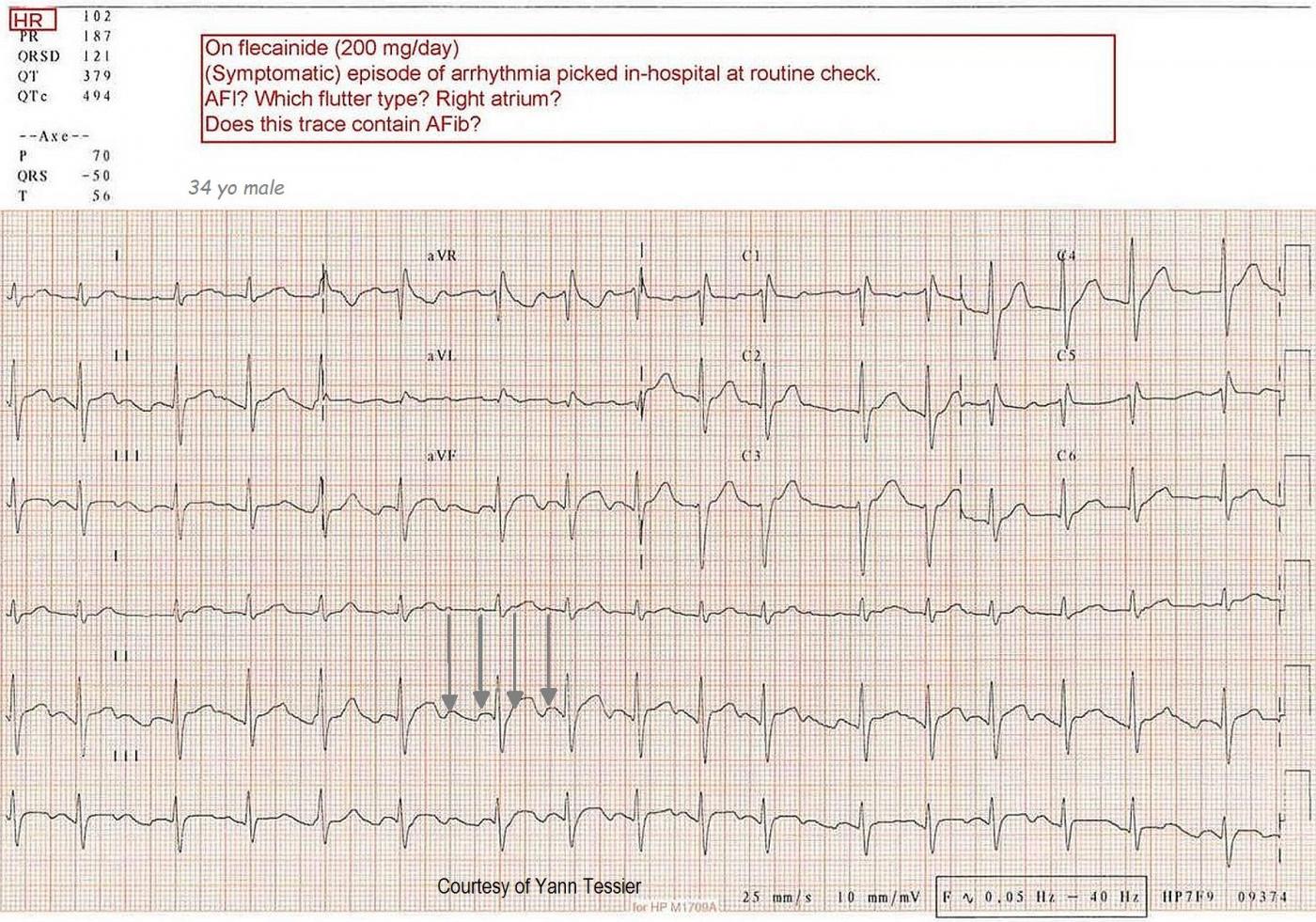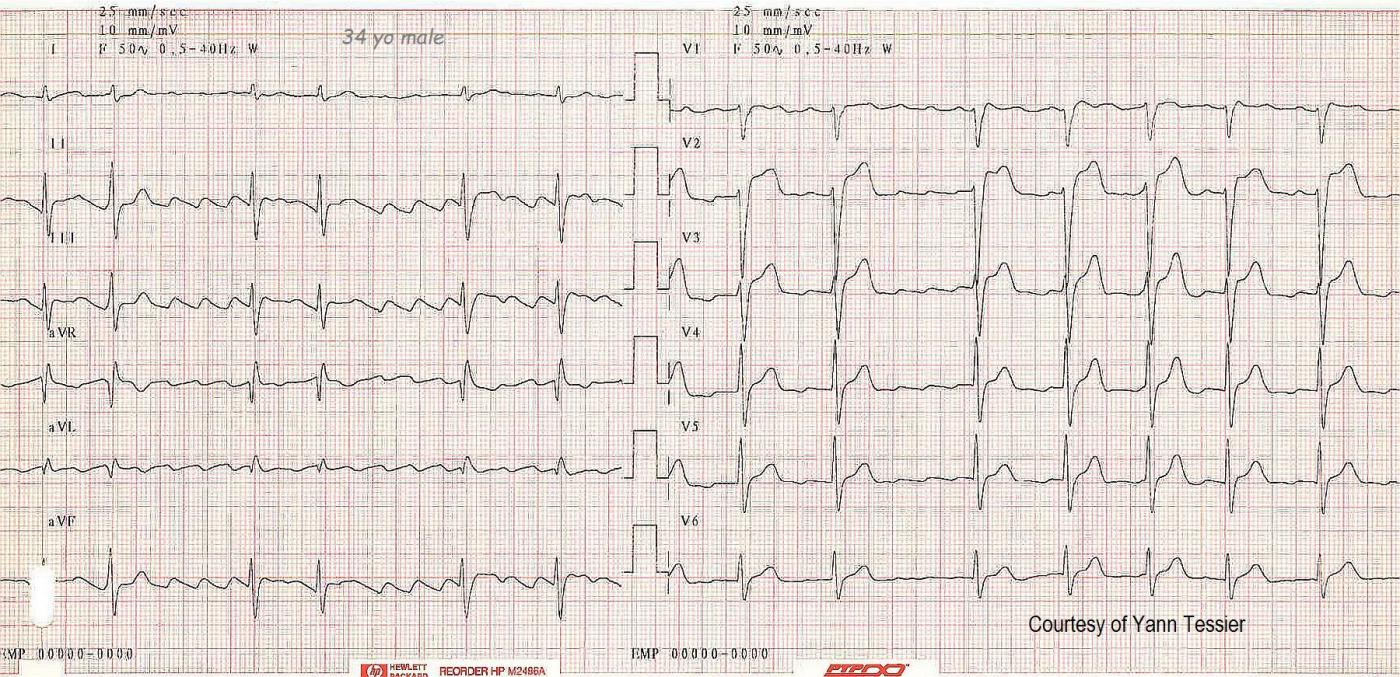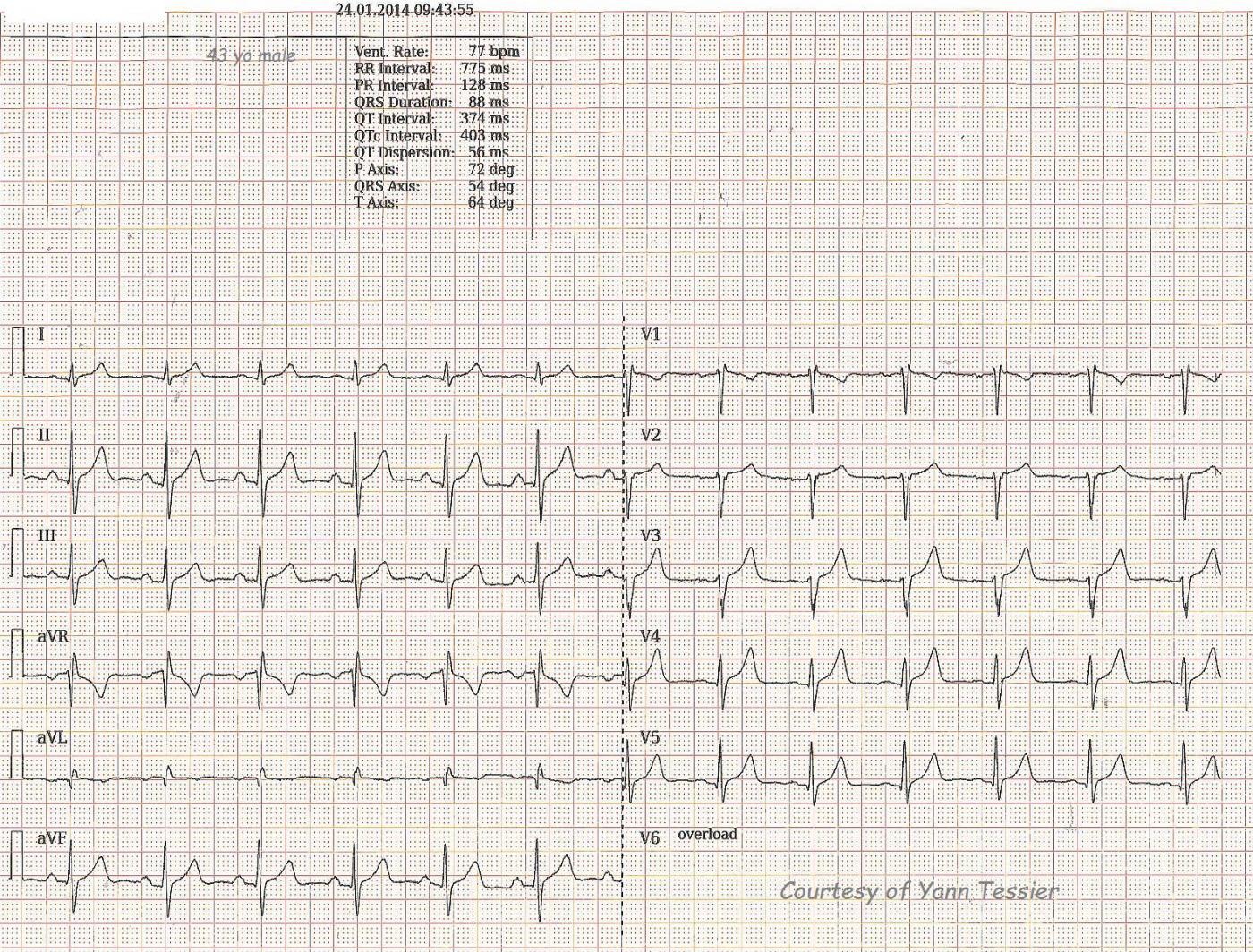In the first ECG shown, we see an irregular tachydysrhythmia. He has had periodic episodes of rapid heart rate since the age of 19, but is in good health otherwise. He is on Flecainide, 200 mg per day. The rhythm might look like atrial fibrillation to many people, but there are signs of regular, fast flutter waves (arrows). The irregularity is caused by variable conduction of the atrial flutter. The QRS is slightly widened, possibly due to the Flecainide, a sodium-channel blocker which slows conduction.
The patient usually felt palpitations during these periods of rapid heart rate, but had no syncopal episodes, chest pain, or other concerning symptoms.
The next ECG shows more apparent flutter waves. The ST elevation is due to artifact which can occur on manually-obtained ECGs due to the type of filtering. It is not uncommon to see dramatic ST elevation on manually-obtained rhythm strips which disappears when a standard filtered 12-Lead is performed. On other ECGs, the patient also had periods of NSR and frequent PACs. (ECGs not shown).
The third ECG was obtained after the patient underwent successful radiofrequency ablation for atrial fib / atrial flutter. He is now off antiarrhythmics, and feeling well.
For instructors and students, this is a nice "before and after" series to illustrate successful ablation.
All our content is FREE & COPYRIGHT FREE for non-commercial use
Please be courteous and leave any watermark or author attribution on content you reproduce.





Comments
Nice case but...
Unfortunately there is a technical error with the first ECG. However, this provides another teaching point! There is no logical progression of QRS and T wave morphology from V1 to V6 and the appearances here can only be explained by there having been errors in electrode positioning or connection. At first I thought it was a simple V2/V3 transposal but V4 doesn’t really proceed as I would have expected and V5 is bizarre, looking very much like V1. I don’t know what has happened here but something has been done wrong!
Dave R
Agree
I agree, Dave, but did not have an explanation. I submitted the case anyway because it is primarily about the dysrhythmias, and it does illustrate the value of successful ablation. Thanks for the comments - it is indeed another good teaching point!
Dawn Altman, Admin
test ipad
Test from iPad
test
Test
test
The
Test
Test
test comment 0725
Test comment 0725
Test 0725
Test steven0725
test0725 logged out
Test logged out 0725